originally posted at https://canmom.tumblr.com/post/630797...
It is once again the hour of Thursday, which means it’s time for Animation Night! Tonight the focus is work by Black directors and animators, primarily American ones (though working with studios from all over). Huge thanks go to Natalia @holymoley for planning this one and picking most of the things we’re going to watch!
Content note: a large proportion of tonight’s films direct engages with anti-Black racism. I’ll try to give specific content warnings for each bit, but that’s going to be a theme throughout.

1: An Oversimplification of Her Beauty (2012, dir. Terence Nance)
The first film we have to watch tonight is one that’s not been often seen outside of film festivals, which is a shame because it features creative animation in a variety of styles.
Oversimplification is a blend of live action and animation (a very technically challenging thing to do, which I need to do a full night on at some point!). Its story is kind of metafictional, playing with the medium; the main character is explicitly a fictionalised version of the director, Terence Nance. I’m not 100% sure how we’ll find the story, whether it will be too het; but in any case, it presents the introspective meditation of a filmmaker about a time he was stood up in a relationship, and then made a film about it and showed it to the woman who stood him up.
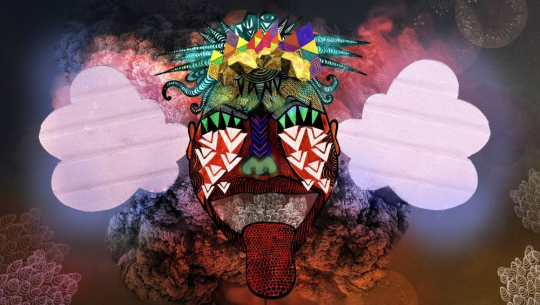
You can read a bit about the film’s style and plot from this glowing BFI review, but let’s talk specifically about animation! It’s drawing heavily on afrofuturist art - the BFI mention Jean-Michel Basquiat, Sun Ra and Barkley L. Hendricks as influences, though for all I know they could just be pulling the biggest names! - but in any case, this means the animated sections have a unique style with a ton of texture, using many different methods including (from a glance through) stop-motion and digital collage.
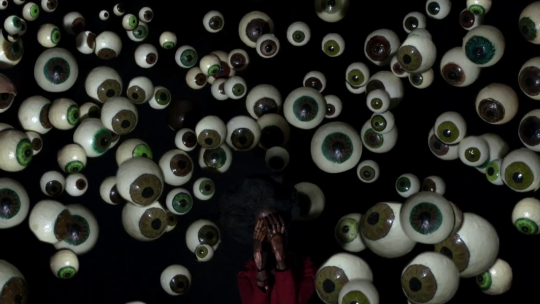
The animation seems to have a collaboration from animators around the world. Quite a lot of them were apparently volunteers since the film was not well-funded. In an interview with Filmmaker magazine, Nance describes some of the process:
Filmmaker: Once you had a clear idea of all the elements you would need, who did you reach out to help you execute those? I know you did have a few other collaborators on the more involved animated aspects, correct?
Nance: Yes. The key people were this guy Markus Kempken, a German animator who I gave a lot of animation to in different stages of development. Not to sink to far into animation lingo, but I’d give him layout frames, storyboards and concept art and the project files for some things and he’d flesh it out into full movement. I worked with a lot of my interns on doing the really early hard work of drawing or painting every frame on paper for each of the sections. I think one of the most cohesive collaborations was with an animator and a puppet designer, Leo and Natasha. They’re based in England and they worked on the stop motion section remotely out there while I was here. So, yes, there were a few key collaborators as the years went on and I think one of the most cohesive things was the little factory we had at MOCATA, which is where we made the movie with myself and about five interns. Hannah Buck was the main one, and Jeanne Mailloux. They were constantly working, making frames, without pay, literally for years. That was the one that was the most intensive and it was hard because I didn’t really know what I was doing. I know how to make it but I don’t really have any money, I don’t know how to produce it and I was doing it myself so there was definitely a learning curve.
I’m going to be very curious to see the result!
2: Fleischer Bros., antiblackness & animation history, and responses to it (The Story of OJ)
Researching animated films by Black artists, you end up finding… there really aren’t very many. In the last couple of years, we’ve had the work of Peter Ramsay with films like Into the Spider-Verse (our last feature tonight), but before he got to direct Rise of the Guardians, there was very little. Animated films centring on Black characters, like The Princess and the Frog, or even adaptations of African mythology like the Kirikou series in France, would inevitably turn out to have white people in direction and frequely most other creative roles.
This is because, to put it mildly, the situation for Black artists in the animation industry is still horrendous. Black artists rarely get to have any sort of creative control; at best you see cartoons like Cartoon Network’s Steven Universe and Infinity Train inviting Black artists on for voice work and music, but leaving writing, direction and character design decisions in overwhelmingly white hands.
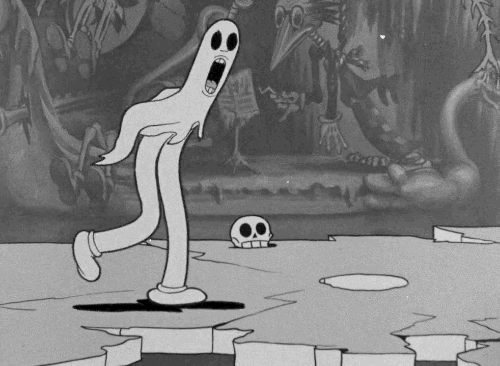
Some of this has to do with the same conditions that cut across industries - overt discrimination in hiring and promotion and funding, and disproportionate lack of financial access to animation schools. But in the case of animation, it probably also has to do with the medium’s history - which has from the outset been really mindbogglingly racist. Since some of the animation work we’ll be watching tonight is a direct response to that history, I’m gonna talk about that briefly here.
Most of the earliest animated films were closely connected to American vaudeville, a descendent of the minstrel shows, and this has had a lasting impact on what gets animated. As Yussef Cole wrote in 2017 in an article about Cuphead:
Instead, I see a game that’s haunted by ghosts; not those confined to its macabre boss fights, but the specter of black culture, appropriated first by the minstrel set then by the Fleischers, Disney and others -twisted into the caricatures that have helped define American cartoons for the better part of a century.
One of the first artists to make a name for himself with animation, James Stuart Blackton, would often animate in real time during vaudeville shows. In 1907 he produced his “Lightning-Sketches,” which involved converting the written word “Coon” into a minstrel caricature and “Cohen” into an anti-semitic stereotype. Vaudeville theater, which evolved out of the remnants of minstrel shows, often employed stereotypes and racist caricatures such as these for comedic effect. Many animators frequented vaudeville theaters after work, and were inspired by its methods.
The truth is racist stereotypes make for easy laughs (ask any faux-edgy comedian). And animation has always been a comedy-centric medium. In his book, Birth of an Industry, Nicholas Sammond writes:
“The stereotypical depiction… borrowing both from well-established graphic traditions and from minstrelsy, variety shows and vaudeville, also traded on an economy of efficiency in which characters immediately telegraphed their seemingly inherent natures and from that their place in the gag.”
Many early cartoon characters were tricksters, layabouts, and thieves, archetypes born from the depiction of the lazy slaves minstrel shows specialized in.
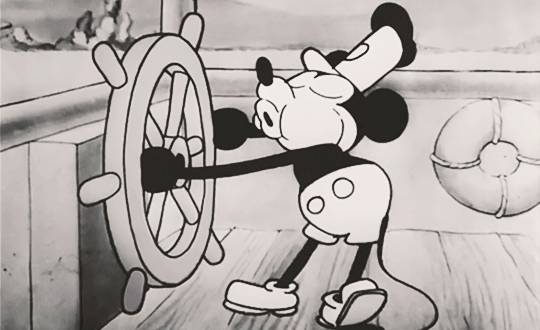
Those early animators, as well as being as racist as any group of largely white people at the time, found appeal in the exaggerated motions of the vaudeville performers. Many of them drew straight-up blackface caricatures, but even those who didn’t were influenced by the style. Early ‘rubber hose’ characters, including the famous Mickey Mouse, are directly minstrel characters despite superficial differences, as Nickolas Sammond discusses in his book Birth of an Industry. (A book that seems incredibly interesting and wide-reaching but I don’t have time to read in the next hour before Animation Night >< )
This is not to say the relation of early animators to Black performers was all overtly hostile, but it was inevitably filtered through stereotypes. The Fleischer brothers, in particular, made an enormous amount of early rubber-hose animations (notably the Betty Boop series), depicting gorgeously lively worlds where just about every object and surface gets a face and a little loop. Gorgeously lively… until the racist caricatures show up. Watching a Fleischer short is a total crapshoot: could be delightful, could be appalling.
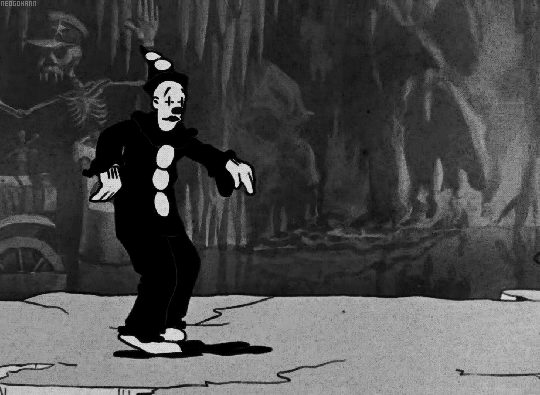
In some of their best-known work, they had some major help: Cab Calloway, a jazz artist with a really cool unique dance style, was often used as a subject for rotoscoping. I have struggled to find good information about what the experience of working with the Fleischers was like for Calloway, or what he thought about the completed shorts. In any case, looking back, it does rather feel like the Fleischers benefited a lot from Black artists, but for their part mostly did a lot of harm. Yussef Cole writes:
Calloway is an electric performer and cartoons like the Fleischer’s 1933 films The Old Man of the Mountain and Betty Boop in Snow White do far better justice to his inimitable style. At the same time, these examples feature his voice in the body of an old white man and a white-faced clown, respectively. When it comes time for cartoons to represent him as a human being, his lips balloon up, his eyes grow, and he is forced into the minstrel mold, the only way that animation studios seemed to be able to envision black characters for decades.
Over the decades since, there was a backlash against these old racist cartoons, and some of them even got banned from distribution, or edited to remove the most overtly racist parts. For example, Disney’s Fantasia was edited, and the “censored eleven” Warner Bros cartoons were taken down altogether. However, these stereotypes still haunt us.
To see a modern response to this history, we have the music video to Jay-Z’s The Story of O.J, a modern animation which pastiches those early cartoons to underline the song’s discussion of antiblackness, interspersing them with images of the minstrel caricatures facing the racism those cartoons elided.
The video was animated by ‘The Mill’, who write a little bit (in corporate-speak) about it here. Somehow they managed to turn the entire thing around in just six weeks, which is a hell of a feat.
[cn: the song, as well as like… being a very direct explicit discussion of antiblackness, has one throwaway antisemitic line]
3. The Boondocks, episode 1
The next big thing I have to show is The Boondocks, written and directed by Aaron McGruder. Originally a syndicated comic strip, it became an animesque series - though it’s overtly leftist and political in a way that’s extremely unusual for American animation.
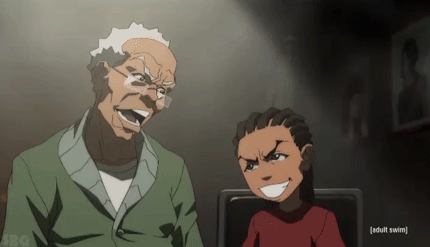
The Boondocks centres on two brothers, Huey and Riley Freeman, living with their grandad. Huey is a hardcore 10-year-old leftist, Riley is an aspiring rapper, and they get up to various misadventures. It’s a sitcom, but compared to other American animated sitcoms, this is one whose aesthetic is a lot more embedded in the world - and one which feels a lot more alive and pointed, rather than tediously cynical. The main political flaw in it, from what I know at the moment, is a bizarre streak of 9/11 trutherism, but I guess that’s what the Bush era was like!
Like AtlA, a fair bit of animation was outsourced to Korean studios (Dong Woo, Moi and MIR), but at least in the first season a lot was done directly by the American studio Adelaide, and McGruder’s studio Rebel Base. Adelaide mostly seems to have made various TV cartoons in the past in the usual American style, but their work on The Boondocks takes heavily after anime: perspective-accurate, 3D scenes, cel shading, mildly-exaggerated faces with a variety of complex expressions, and alternating scenes of limited animation to save budget for a few exceptionally expressive, fluid scenes.
Plan is to watch the first episode. Unfortunately the 1080p version I found is very obviously an upscale, but it’s clear enough.
4. The PJs, episode 1
In a similar vein to The Boondocks, we have another animated sitcom, but this time stop motion. The PJs is a project led by Larry Wilmore, Steve Tompkins, and Eddie Murphy, who has often lent his voice to animation (inevitably, mostly put in nonhuman characters like Shrek’s Donkey) but not as often had the chance to direct it.
PJs is short for Projects; the sitcom centres on a Black family living in a public housing project, the main character being the superintendent who maintains the project. The cast is kind of sprawling across 44 episodes, but we’ll check out the first one. (I’m running out of time, so I can’t provide more research here).
5. Into The Spider-Verse (dir. Peter Ramsay, Bob Persichetti, Rodney Rothman)
CG animated films in recent decades have kind of fallen into a bit of a mould: smooth, rounded CG animals, celebrity voices, not a lot of flair or interest. Thankfully, this got shaken up a lot in 2018, with Into The Spider-Verse showing an absolutely breathtaking interpretation of “comic book style”, with vivid saturated colours, incredible 2D particle effects, brilliant use of hand-drawn expressions on CG characters, and just impeccable cinematography and editing. Visually, they absolutely killed it with this movie.
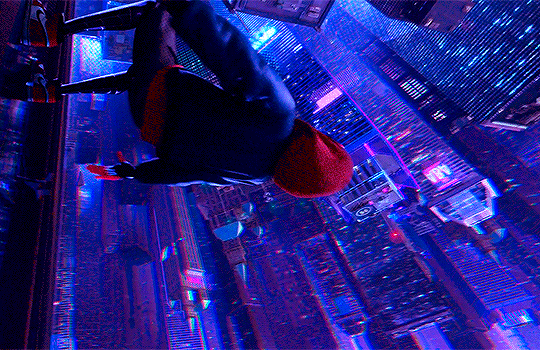
Spider-Verse is pretty much what the title suggests, a story about a Spiderman multiverse: its main character is Miles Morales, a Black boy from one of the many interconnected Marvel earths. In Miles’s world, their version of white Spiderman (Peter Parker) dies abruptly, only for another, much less impressive Peter Parker to suddenly come crashing into his universe. Before long it becomes apparent that there are a whole variety of Spider-people (in styles ranging from film noir to anime) crashing Miles’s universe, and a sinister conspiracy that is affecting all of them - so naturally Miles has to take up the Spider mantle himself and become leader of the ensemble cast.
Narratively and politically, though, Into the Spider-Verse might feel like a step back, as Natalia is planning to discuss: while Black animators have finally gotten to work at the big companies with serious budgets, Spider-Verse’s story is much more palatable and corporate-friendly than something overtly challenging like The Boondocks. That’s going to be a discussion we’ll have in a couple of hours though… because we’re due to start the films in like ten minutes.
6. Short films and music videos
To wrap up, we have some short films and music videos by Black artists: Dear Basketball by Kobe Bryan, considering his career on retirement; and Hair Love, dir. Matthew A. Cherry, about a dad attempting to help his daughter style her hair. Then, to wrap up, Natalia gave me quite a large collection of music videos - we’ll get through as many as we have time for, and then save the rest for future nights.
When and where
Animation Night 21 will be at twitch.tv/canmom… at 7pm UK time, which is to say pretty much right fucking now lmao. and I started this post several hours ago and all ><
Comments